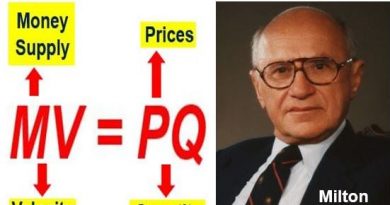What Does Tit for Tat Mean and How Does It Work

What Does Tit for Tat Mean and How Does It Work?
Tit for Tat is a strategy in game theory that players use when faced with a payoff matrix, like in a prisoner’s dilemma. It was formulated by mathematician and psychologist Anatol Rapoport. The strategy involves participants following the same action as their opponent in an iterated prisoner’s dilemma.
For example, if a player is provoked, they will retaliate. If unprovoked, they will cooperate. This strategy is not limited to economics and is used in various fields, including psychology, sociology, and biology.
Key Takeaways:
– Tit for tat is a game theory strategy where participants mimic their opponent’s action after cooperating in the first round.
– It can be used in games with repeated moves or in a series of similar games.
– Cooperation produces a more favorable outcome than a non-cooperative strategy.
– It is found in economics, psychology, sociology, biology, and other fields.
Understanding Tit for Tat:
Tit for tat can be implemented in games with repeated moves or in a series of similar games. It revolves around game theory, which explains human interaction in competitive environments. There are two types of game theory: cooperative and uncooperative. In cooperative game theory, participants negotiate and cooperate for the best outcome. In non-cooperative game theory, there is no negotiation or cooperation.
Tit for tat suggests that cooperating with another person leads to success. The strategy involves cooperating in the first interaction and then mimicking the opponent’s moves. It is based on the concepts of retaliation and altruism. When faced with a dilemma, an individual cooperates if the other member has a history of cooperating and defaults if the counterparty previously defaulted.
Example of Tit for Tat:
The prisoner’s dilemma is a well-known economic scenario that illustrates the balance between cooperation and competition. It applies to business, politics, and general social settings.
In the traditional version of the game, two individuals are arrested and face a dilemma. If both confess, they serve five years in jail. If only one confesses, the other serves seven years while the confessor goes free. If neither confesses, they each serve three years. The tit for tat strategy involves one prisoner starting with cooperation (not confessing) and the other following suit. This can be repeated in multiple games.
For example, two competing economies can use a tit for tat strategy to benefit both. One economy starts by not imposing import tariffs on the other’s goods and services to encourage good behavior. If the second economy imposes tariffs, the first economy retaliates.
What Is Tit for Tat in Business?
In business, tit for tat refers to a strategy of mutual cooperation. Operating in good faith during negotiations can reduce costs and maximize payoffs. However, if one party stops cooperating, the other may do the same, increasing costs and potentially ruining negotiations.
What Is Tit for Tat in Trade?
In trade, countries may impose tariffs to raise import prices relative to domestic products. Trade wars occur when countries impose and escalate tariffs on each other. This leads to increased costs and slower economic growth over time due to distrust between countries.
Why Is Tit for Tat the Best Strategy?
Tit for tat strategies often maximize payoffs for both parties. This is especially true in a prisoner’s dilemma where cooperation leads to mutual benefit and retaliation results in undesirable outcomes for both.
The Bottom Line:
Tit for tat is a strategy of cooperation where players mirror each other’s moves. In a prisoner’s dilemma, it can maximize mutual benefit. However, if one player chooses an unfavorable action, the other may retaliate, leading to mutual detriment. This is seen in trade wars with escalating tariffs on exports.



